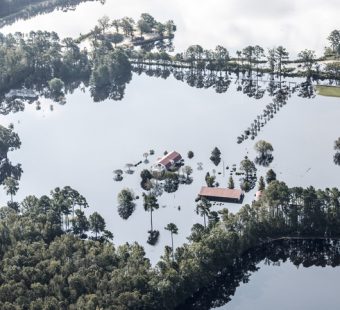
Data, Tech Promising for Flood Risk, but Groundwater May Change the Equation
Max Dorfman, Research Writer, Triple-I, 1/18/2022
A recent report by broker Marsh McLennan offers a variety of approaches to address global flood risk. In 2021 alone, Germany and Belgium saw heavy rainfall that caused more than $53 billion in damages. Losses due to flooding in China surpassed $24 billion. In the United States, Hurricane Ida inflicted more than $65 billion in damages and interfered with oil and gas production.
And traditional flood risk from above is no longer the only concern. A recent article in MIT Technology Review catalogued a growing worry among researchers about rising groundwater, which has been linked to climate and sea-level risk.
Beyond traditional approaches
The Marsh study identifies several steps that could help communities become more resilient. It recommends that businesses involved in global supply chains identify risk hotspots and use models to gain insight into flood risk over time and at higher geographical resolutions.
“Many of the same advances in physical risk modeling and data being used by financial institutions are also available to corporates,” the report says. “Tools exist for evaluating expected changes in the frequency and severity of climate-related perils — such as flood — for different climate scenarios and over different timeframes.”
Such tools can inform insurance strategies and long-term investment decisions. They also can support approaches that go beyond risk transfer. The Marsh report mentions “parametric insurance”, in which payouts are based on verifiable parameters like rainfall or river level, without the need for costly, time-consuming – and often hazardous — post-event claims adjusting.
“As climate change exacerbates flood risk, parametric insurance will become increasingly valuable as a supplement to traditional indemnity insurance and to limit business interruption losses,” the report says. Marsh also points to community-based catastrophe insurance – arranged by governmental or quasigovernmental entities – as a cost-effective tool to increase community and business resilience.
Traditional flood mitigation methods can be enhanced using “green infrastructure” – plant or soil systems, permeable pavement, or other natural means – to decrease stormwater runoff. This can include household and neighborhood techniques, like installing rain barrels and planting rain gardens, or watershed-level approaches, like protecting and restoring open spaces and wetlands.
Regulators are paying closer attention to climate risk, and financial institutions are finding themselves under pressure to quantify their exposures. Businesses at high risk or with deteriorating outlooks may face increased capital costs and find it difficult to secure affordable insurance.
Groundwater: a rising worry
An underreported but potentially enormous flooding concern is rising groundwater, according to experts in the MIT article.
“The problem is huge,” says Kristina Hill, an associate professor at the University of California, Berkeley. “We’ve way underestimated the flooding problem.”
Impacts on coastal infrastructure could be catastrophic.
“Roadways will be eroded from below; septic systems won’t drain; seawalls will keep the ocean out but trap the water seeping up, leading to more flooding,” the MIT article predicts. “Home foundations will crack; sewers will backflow and potentially leak toxic gases into people’s homes.”
Rising groundwater already may be taking a toll. According to a Florida International University study, the underground water incursions at the Champlain Towers in Surfside, Fla., which collapsed in June 2021, more than doubled over 26 years. This may or may not have contributed to the disaster, said geologist and research professor Randall Parkinson, who conducted the study. But until the event, quantifying below-ground ebbs and flows had been largely overlooked when climate and sea-level risks were calculated, he says.
“Prior to June 24, 2021, our primary focus was on a relatively narrow field of future above-ground conditions and related risks,” Parkinson told the Palm Beach Post. “Now we must also consider existing and future below-ground conditions and climate-related risks from a much broader perspective.”



